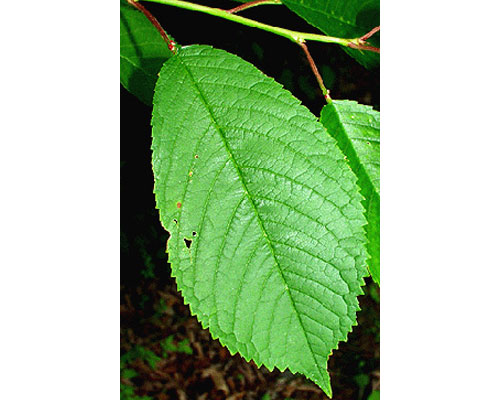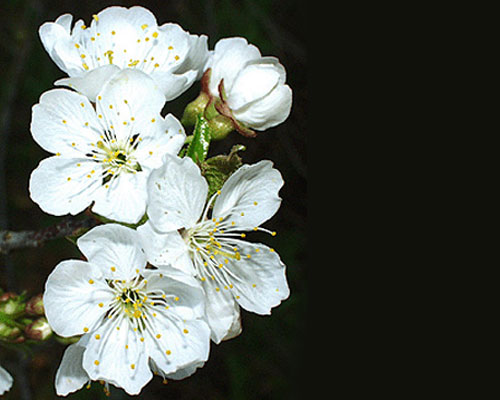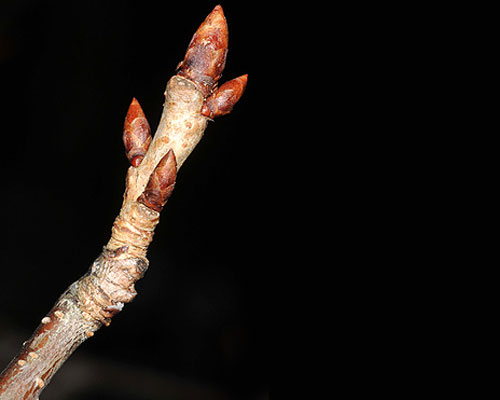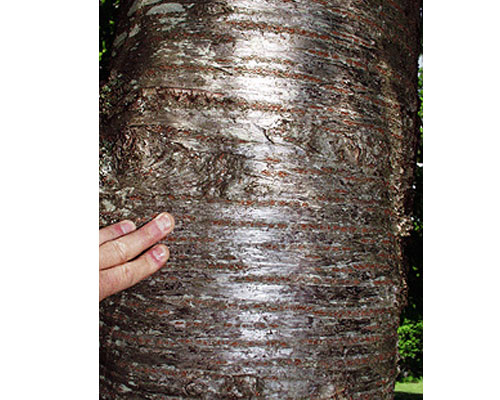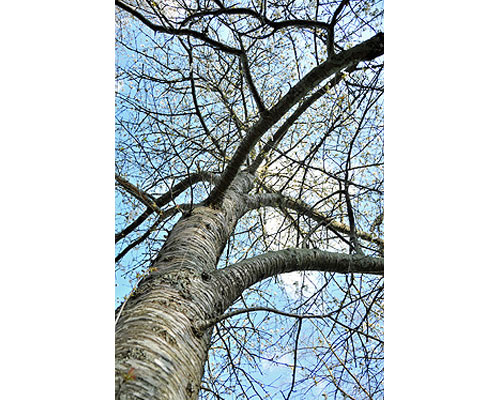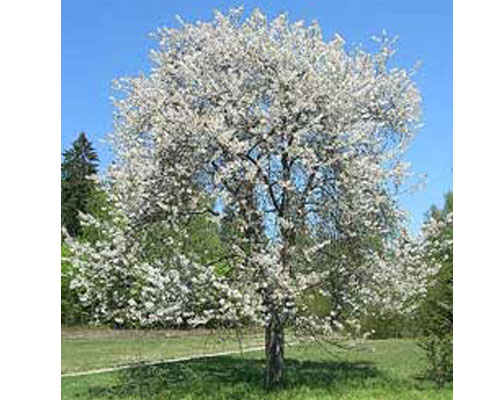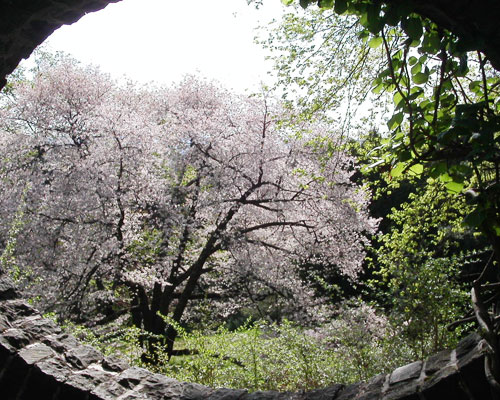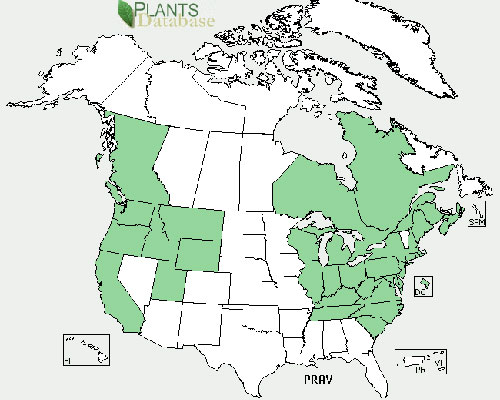Sweet Cherry
Sweet Cherry
Prunus avium - #27
Brought here from Europe around 1927 and sometimes referred to as European bird cherry, the tree’s red, fleshy fruits are widely eaten and distributed by birds. The fruit ripens in June and July. It is the most abundant of the domestic cherries found in the wild.
Leaf stems have two-to-five red glands just below the leaves. The purplish-brown bark of young trees is smooth with horizontal lenticels (air openings). On older trees, the bark is blackish-brown and peels horizontally in strips. Bark wounds are sealed by an extruding gum that keeps insects and fungal infections out. This sealing substance is aromatic and has been used as a substitute for chewing gum.

